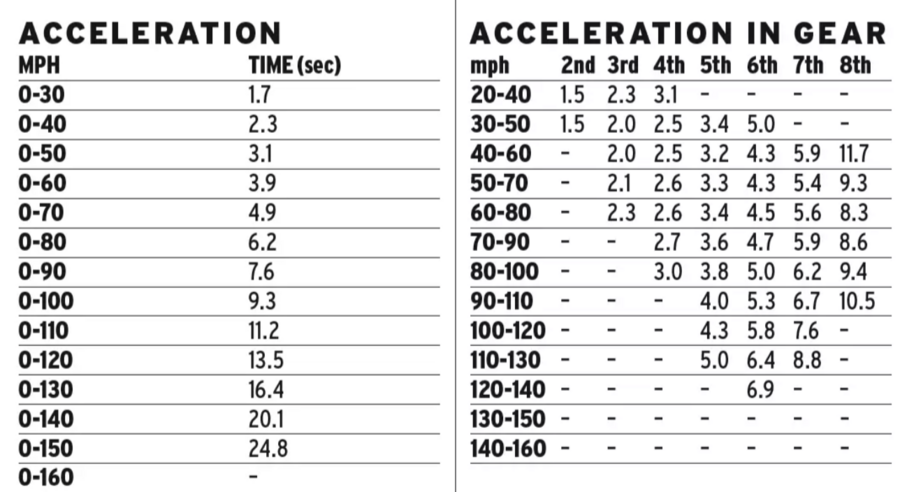The SVR had a V8 exhaust note that, at its wildest, could clear the outside lane of a motorway at a range of about 400 yards, but in line with the car’s wider transformation, the SV is at least marginally more demure.
In place of that fearsome supercharged bellow, you get a slightly higher-register V8 warble here – one less angry and spiky in character, and more homogeneous and melodious, albeit (no doubt due to tougher emissions standards) more synthesised-sounding.
In terms of the style and breadth of its delivery, this twin-turbocharged V8 offers plenty. It revs quite freely, all the way beyond 7000rpm when you need it to, and it empowers the SV to take off with real brutality from standing, and through the lower gear ratios.
Launch control starts certainly aren’t smooth, luxurious experiences. While the body resists squatting to extremes, each successive automatic gearchange really tears through the driveline and makes your head rock back. That’s quite rare in a performance car with a torque-converter gearbox, but here the apparent tension and friction in a driveline with its fair share of locking differentials is clear to perceive.

There is, of course, abundant traction and forward momentum too. This car is highly unlikely to leave you wanting more, but it recorded a 0-60mph time of 3.9sec in a class where we’ve seen Porsches and Lamborghinis dip well under 3.5sec in recent years, and where even quicker EVs now exist.
The Range Rover Sport SVR, for the record, managed it in 4.4sec. It’s a similar story in terms of roll-on acceleration. While the Urus we tested in 2019 got from 30-70mph in 2.8sec, the SV took 3.2sec.
Adaptability is a stronger calling card for this car’s powertrain than outright pace, however. In SV mode, the engine holds onto gears for longer, and leaves drive engaged on the overrun as you close in on corners for a tangible sporting sense of purpose.
In its gentler moments, it can be a picture of remarkable silver-tongued smoothness and docility. And in JLR’s off-roading modes, the powertrain’s controls and responses are dulled a little, just as you would want them to be for the sake of the close management of momentum.
